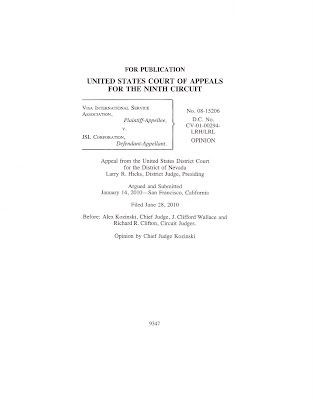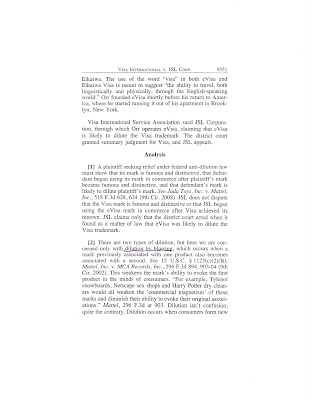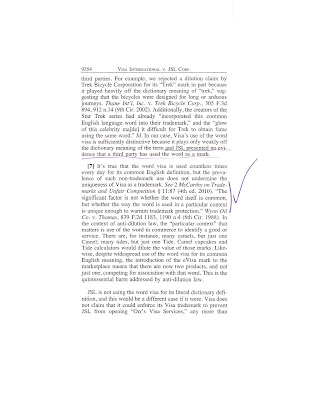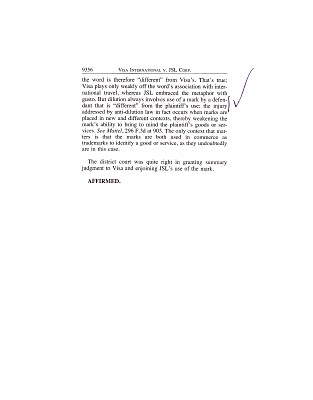For the reader's convenience, this Opinion is incorporated herein.
Talking Points or Take Aways:
1. Dilution isn't confusion.
2. Dilution occurs when consumers form new and different associations with the plaintiff's mark.
3. Use of an identical mark provides circumstantial evidence of dilution.
4. Establishing likelihood of dilution does not require expert testimony or market surveys.
5. Good intentions alone do not negate a showing of likelihood of dilution.
Comment: With apologies to John Milton, this case does indeed point out that the defendant's "good intentions", e.g., his claim that he had no intent to dilute the plaintiff's VISA mark, "alone do not negate a showing of likelihood of dilution."
Conclusion: Dilution by Blurring is paved with Good Intentions.
6. Non-trademark use of a common English word by third parties does not undermine the uniqueness of said common English word as a trademark by the trademark holder.
7. "But dilution always involves use of a mark by a defendant that is "different" from the plaintiff's use; the injury addressed by anti-dilution law in fact occurs when marks are placed in new and different contexts, thereby weakening the mark's ability to bring to mind the plaintiff's goods or services."








*** *** ***
Respectfully submitted,
William E. Maguire
LAW OFFICES OF WILLIAM E. MAGUIRE
Los Angeles, California
www.TrademarkEsq.com
*** *** *** *** ***

No comments:
Post a Comment